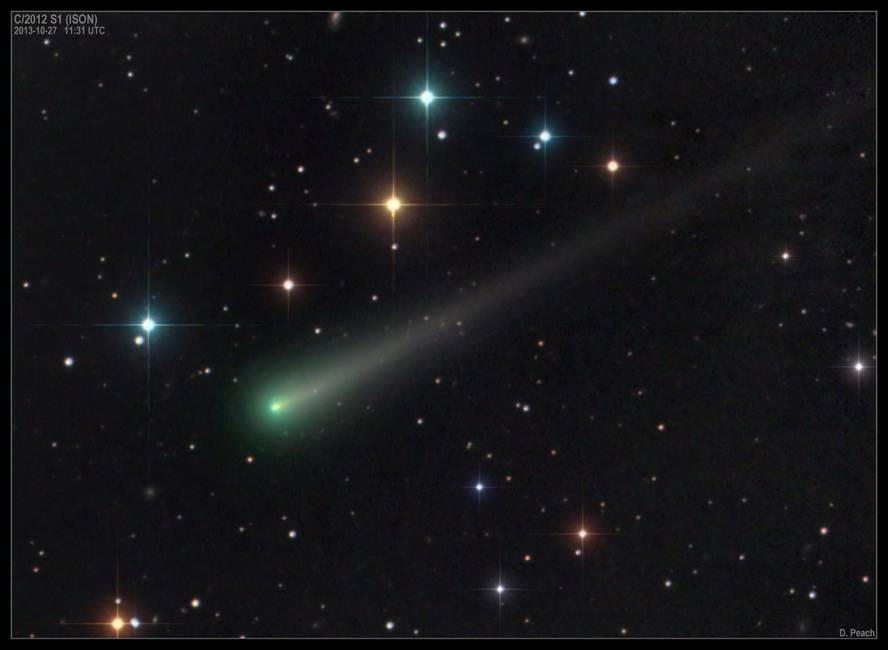Comet ISON waiting for the show
Astronomers are following the comet ISON since they discovered. In fact, estimates of the orbit of the comet indicated that it would pass through its perihelion on November 28, 2013, the closest point to the star in the orbit around the Sun, and that, in addition, would be very close to the Sun: At about 1.8 million km (0.012 astronomical units), for example, the Halley Kite reached 90 million km in 1986.
In fact, ISON belongs to the set of sun-powered kites, and the fact that the perihelion is so close to the Sun brings great uncertainty to the potential show. This type of smaller kites get rid of the perihelion or later, and only the larger ones survive the conditions they must endure in the perihelion.
Astronomers have calculated that the ISON radio is between 500 and 2,000 meters, so they consider that it has a chance to overcome the perihelion and to give the spectacle when you move back to the fog of Oort near the Earth. Visible in the early morning on the eastern horizon.
For the common observer the show will begin then, if it never begins, but for astronomers it has been a long time since what happens to the comet, because what they are going to learn from the observations can be much, as they say in the article “What can happen to the comet ISON from now on?” from the web of the ISON comet’s CIOC observation campaign. The author of the article, Matthew Knight, describes in the text three possible scenarios: the disintegration of the comet before reaching the perihelion, its destruction near the perihelion and its survival; and explains what each event will allow to learn.
If the comet was destroyed, despite being “disappointing”, astronomers would have the best option in history to investigate the death of a comet, “because the number of telescopes that are studying the comet ISON from Earth and from space is huge,” he says in his article. And he underlines that it will be the first time a comet has been followed all the way from the orbit of Saturn to the Sun.
However, Knight wants the comet to come out alive and, specifically, to “break the ISON a little bit, let’s assume in a few parts, to release enough material to be able to see it very bright from Earth and that, at the same time, astronomers have pieces of comets that they can investigate for months.” So be it.






